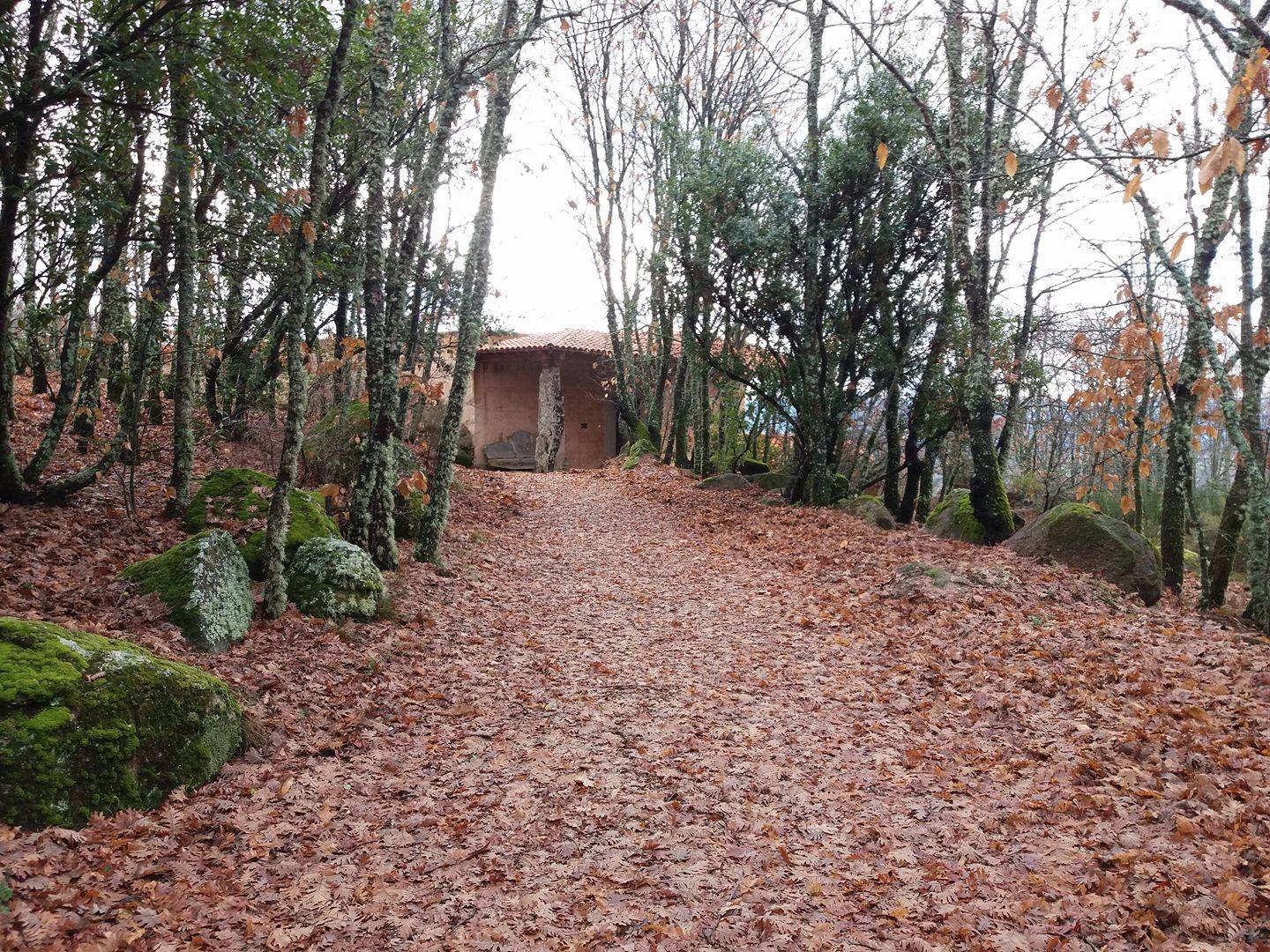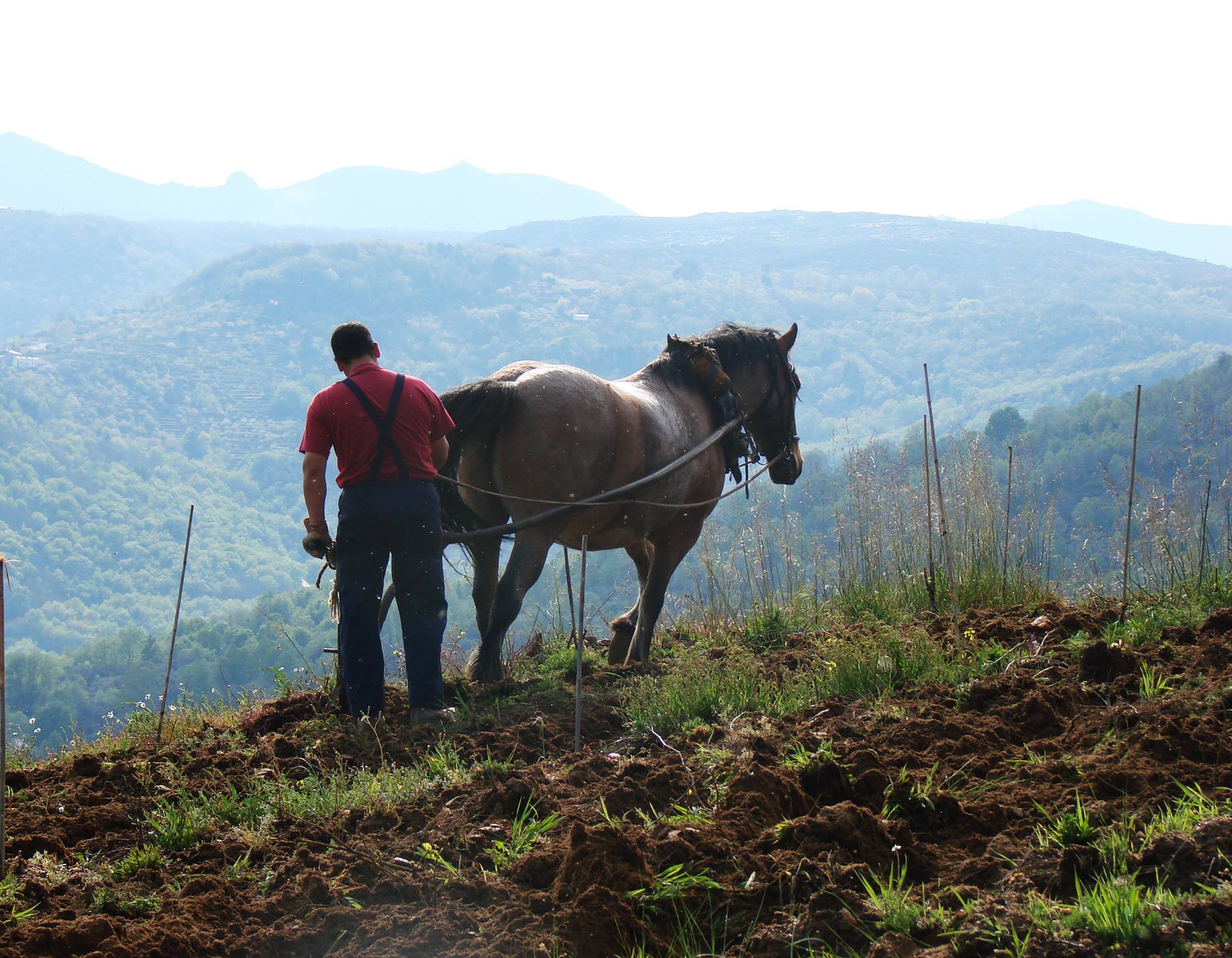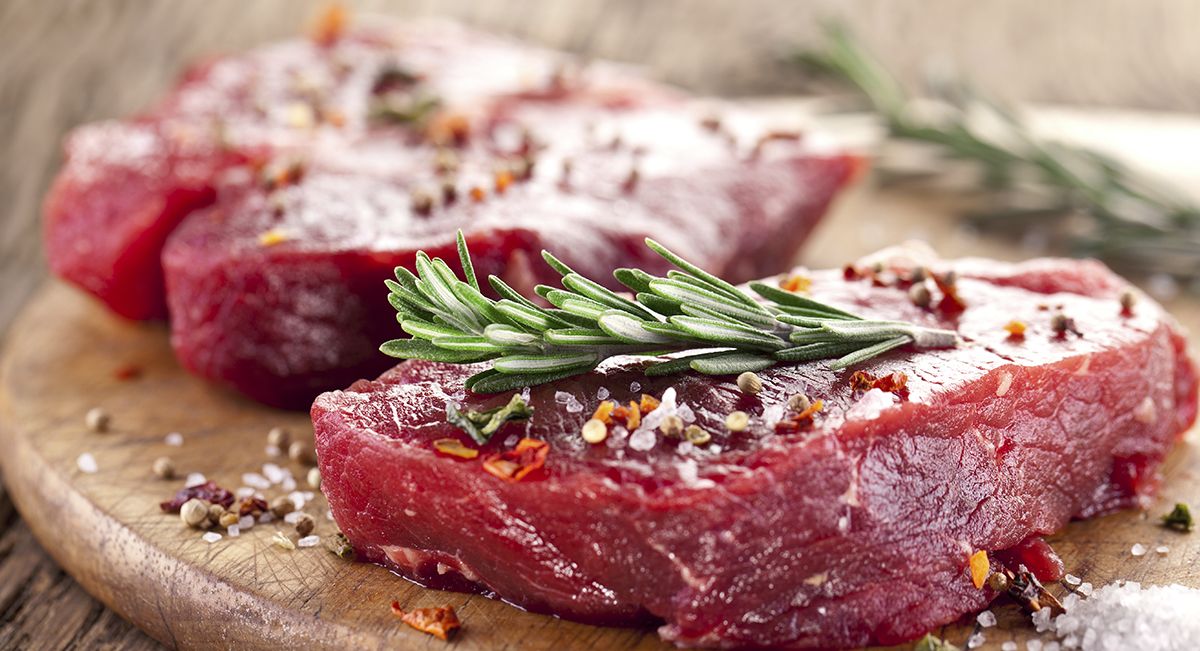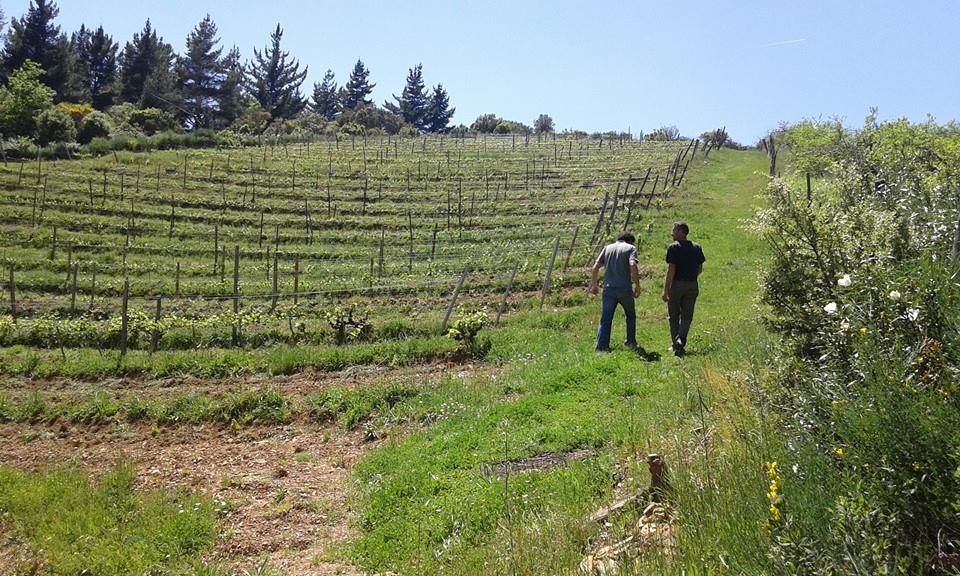A few weeks ago, I published an article about the Sierra de Salamanca P.D.O. and its wines Rufete, a Hidden Jewel in a Land of Century Vines post belongs to a series dedicated to the wineries of the region. Today we're taking a look at the Cámbrico winery.
Hidden in the middle of the mountains of Villanueva del Conde, in perfect harmony with the surrounding Natural Park Las Batuecas, you will find the Cámbrico winery. In only two decades, the wines of this winery have become recognized as some of the best in the province.
In 1999, Fernando Maíllo began his venture into winemaking after becoming fascinated by the personality of the mysterious Rufete grape. This variety is attractive due to its uniqueness and elegance. The Rufete grape is reminiscent of the delicate profile exhibited by Pinot Noir, and its floral aromas suggest Gamay. These characteristics hint at Rufete's French heritage. Around the 11th century, the region, known as the Sierra de Francia (French Mountain Range), was inhabited by the French. This lead to its modern name, although the P.D.O. was named the Sierra de Salamanca (Salamancan Mountains) to avoid confusion in the international markets. The French planted the Pinot Noir variety, which after many years of adaptation, evolved into Rufete, while maintaining characteristics of its French origin.
The owners of Cámbrico, neighbours from the mountain village of Sequeros, understood the area's potential to produce quality wine. The microclimate, the diversity of soils, the old vines, and a gem needing some polish, the Rufete grape, were sufficient ingredients to give faith to their project.

The first vines to be incorporated into the Cámbrico winery were the century vines of the "El Pocito" vineyard, which were on the verge of being lost. Twenty years later, this continues to be Cámbrico's main vineyard. However, the winery team has restored vines from three other areas, experimenting with different soils and broadening the varieties with other local classics: Calabrés (considered by many to be a Garnacha clone) and Aragonés (an adaptation of a Tempranillo clone).
The clayey granite soils of the region impart a uniqueness to Cámbrico's wines. In fact, it is from these soils, formed during the Cambrian period 500 million years ago, that the winery draws its name. These soils produce intense, complex and structured wines with notable acidity, pairing perfectly with local cuisine.
Vines between 60 and 110 years old produce fruit with high intensity and concentrated aromas. The 13 hectares under vine at Cámbrico are bush-pruned, terraced vines divided into 130 plots. These vines are located over 800 meters above sea level, allowing the grapes to retain acidity through to maturity. The resulting freshness culminates in well-balanced wines, giving them the elegance for which the wines of the Sierra de Salamanca are known.
The care and attention given to the grapes is demonstrated during harvest, which is done by hand. Harvest is done in several passes, allowing each grape to be taken at optimal ripeness.
The team at Cámbrico is a faithful defender of their land. They work using ecological methods such as recycling pomace and using sheep manure as fertilizer to provide nutrients to their vines.

Despite the prominence of Rufete in La Sierra, other local varieties have recently gained favour. Cámbrico has especially focused on Calabrés. Although it is officially considered a Garnacha clone, a genetic study which is currently underway will determine if it should be classified as its own variety. This notion is supported by the fact that Calabrés has a peculiar profile in the Sierra de Salamanca.
The Cámbrico team began working with 40kg micro-harvests of Calabrés as a way to explore its potential. Fernando Maíllo was fascinated by its pronounced acidity, notes of rose and intensity on the palate. To produce wines that displayed a full expression of Calabrés, old vines were grafted with Calabrés scions. As of today, they still only produce 400kg of this grape due to the limited production of the old vines, maintaining high quality.
The terroir of Sierra de Salamanca also produces Aragonés, a Tempranillo clone. The vineyards produce grapes with a less robust and meaty character than other areas of Spain. In the Sierra de Salamanca, Aragonés is used in varietal wines as well as blends.
A recent project underway in the winery is focused on the production of wines made from the Rufete Blanco grape. This variety, only officially recognized a few weeks ago (May 2020), is found exclusively in the villages of the P.D.O. Wines made from Rufete Blanco exhibit a characteristic unctuous texture and good body. Citric and floral aromas integrate harmoniously with toasty and creamy notes, developed under oak. These wines have surprised and satisfied the palate of the most demanding wine critics. In only a few years of production, Cámbrico's Rufete Blanco variety has already found its way into the cellars of the most prestigious restaurants in the country.
To understand the wines of Cámbrico, Pressing Affairs recommends:
Rufete Granito El Pocito (2014)
This is the most distinctive wine of Cámbrico. It displays the character of Rufete and the potential of the old vines of the Sierra de Salamanca. This varietal wine is characterized by intensity and freshness. The tannins, although present, are smooth and agreeable. A notable acidity rounds off the experience. The wine is produced from the El Pocito vineyard, Cámbrico's first, located in the village of Villanueva del Conde. The vines are terraced in a way that favours the growth cycle, and their elevation between 700 and 800 meters helps retain acidity, providing some protection from warm summer nights. This vineyard was replanted in 1902 and the grapes display intensity and concentrated aroma, a key factor for bottle aging.
During harvest, multiple passes allow grapes to be collected at optimal maturity levels. The wine is aged for 15 months in 300 or 500 litre French oak barrels. During this time, fruity and flower aromas integrate with the toastines, spiciness and vanilla notes of the oak.
Cámbrico Tempranillo (2009)
This wine represents a character unique to Tempranillo wines from the Sierra de Salamanca. The granite soils of the region impart an expressive delicateness to the Aragonés grapes.
Aromas of red fruit, plum and fig give way to cocoa and sweet spices imparted during the oak aging. This is a full bodied wine with silky tannins.
The fermented must is stored in stainless steel. Malolactic fermentation takes place in 300L French oak barrels. Finally, the wine is aged for 26 months of 300 or 500L French oak, where structure is added and the flavour profile is rounded out.
575 Uvas (2017)
575 Uvas is Cámbrico's contribution to the classic blends of the Sierra de Salamanca. Calabrés accounts for 20% of the blend, and adds floral aromas and pronounced acidity, while 74% Tempranillo provides medium body and noteworthy tannins. A small percentage of Rufete adds a touch of freshness that the variety is known for.
The grapes in this blend reach optimal ripeness around mid-August, making them some of the first to be harvested at the winery each season. Old vines in the municipality of Villanueva de Conde produce small, concentrated bunches. Granite and slate soils result in a touch of depth and minerality. In the cellar, the wine is aged for 13 months in 300 and 500L French oak barrels, introducing spicy and toasty notes. 575 Uvas is an excellent pairing option for the province's well-known cured meats, or Morucha beef, a cattle breed originating in Salamanca.

Viñas del Cámbrico. Rufete Blanco (2016)
This wine is a result of Cambrico's dedicated work to show wine lovers the uniqueness of the Rufete Blanco grape. A smooth texture and medium-plus body give way to a broad spectrum of flavours and sensations. White flowers, stone fruit and minerality notes show the Rufete Blanco character. Toasty notes and anis provided by the oak are integrated elegantly without hiding the grape's own personality. This wine is an excellent way to introduce a grape with a long history, but which was only recently officially recognized.
In the words of Fernando Maíllo,
Owner of Cámbrico Winery
What drew you to this area and convinced you to dedicate your career to producing wines in the Sierra of Salamanca? I was born in the Sierra de Francia. Since childhood, I have known the special flavours of all the fruits and vegetables of this area. After working a few years in the wine sector, I recognized the enormous potential of the vines here.
What makes the Rufete variety so unique and so tightly linked to La Sierra? It is not only unique due to its scarceness, but also for its particular winemaking characteristics. It's been grown in the Sierra de Francia for centuries, is almost exclusive to the area, and it's the main variety here. This is due to careful selection over countless generations.
The star of this region is Rufete. However, how important are Calabrés and Aragonés in your wines? They both allow us to make wines of very different styles, but which still compliment Rufete varietals, and they're both interesting and unique, especially Calabrés. With Aragonés (Tempranillo), we are able to make excellent wines coming from very old vines in certain vineyards.
What can wine lovers look forward to in the mysterious Rufete Blanco? How do you expect its future to develop on the national white wine scene? It's an interesting and unique grape. It has structure and intensity. With Rufete Blanco, we make highly-regarded wines that are available on the wine lists of restaurants such as Arzak, Martín Berasategui, Gambara, Akelarre and The Ledbury.
What's the relationship amongst the wineries in the P.D.O.? Very good. We work together to ensure that the quality of all the wineries in the P.D.O. is the highest possible. In reality, it's something that undoubtedly helps the prestige of the area and benefits us all.
To finish, can you recommend a food pairing for one of your white and red wines? For Cámbrico, Rufete el Pocito I recommend grilled mushrooms, ideally Boletes (from the Boletus genus) or Caesar's Mushrooms (Amanita caesarea) foraged locally. Our white has lots of structure and I recommend oysters, rice, red tuna or cured ham.
For more information about Cámbrico visit www.cambrico.com


